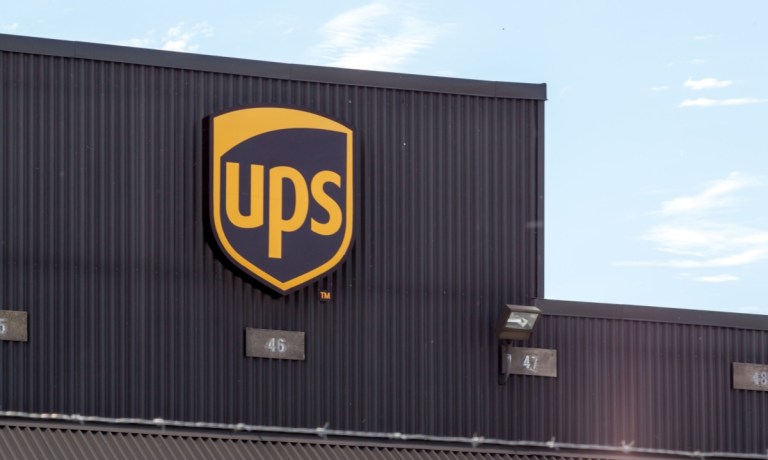
UPS is looking to returns and big-and-bulky deliveries to expand its addressable market at a time when its shipping volumes have been decreasing.
The company saw a slower rate of decline in shipping volumes during the first quarter while still facing a challenging macroeconomic environment, UPS executives said Tuesday (April 23) during the company’s quarterly earnings call.
During the three months ended March 31, the company saw average daily volumes decrease 3.2% year over year in the U.S. domestic segment and drop 5.8% year over year in the international segment, UPS said in a Tuesday earnings release.
“The first quarter turned out as we expected … U.S. average daily volume declined year over year but the rate of decline slowed as the quarter progressed, ending with March down less than one percent,” UPS CEO Carol B. Tomé said in a presentation released Tuesday.
In both the domestic segment and the international segment, UPS saw the average daily volume decline rate improve compared to the previous quarter, Tomé said Tuesday during the earnings call.
Tomé attributed the improvement in the U.S. to the efforts of the company’s sales team, which generated new volume in the UPS network. She said the improvement in the international segment was due to export growth in certain markets.
Highlighting a development that will bring new business to the company, Tomé noted an April 1 announcement that UPS will become the primary air cargo provider for the United States Postal Service (USPS), replacing FedEx. UPS will move most of the USPS air cargo within the U.S.
“The USPS air cargo business fits beautifully with our strategy to grow our B2B business,” Tomé said during the call. “To win, we put together an innovative and differentiated solution that leverages our integrated network and existing assets.”
While there were some improvements in the first quarter, UPS continued to see a macroeconomic environment in which there was soft demand across its business, Brian Newman, executive vice president and chief financial officer at UPS, said during the call.
The company focused on “controlling what we can control” by reducing expenses while maintaining service levels, Newman said.
To expand its addressable market, UPS has focused on returns and on big-and-bulky items, Tomé said during the call.
Through Happy Returns, which UPS acquired in October, the company offers no-box, no-label returns. This business drives pickup and delivery density and creates customer loyalty and repeat business, Tomé said.
During the first quarter, the company’s overall returns volume in the U.S. increased 1.4%. At the same time, Happy Returns more than quadrupled its average daily volume.
Through Roadie, which UPS acquired in 2021, the company offers big-and-bulky delivery of items like grills and furniture that don’t fit in its small package delivery network, Tomé said during the call.
“This is enabling us to unlock additional revenue opportunities in the highly fragmented $60 billion big-and-bulky market in the U.S.,” Tomé said. “It’s still early days, but this is a large opportunity for us to grow quality revenue and profit and serve the needs of our customers.”